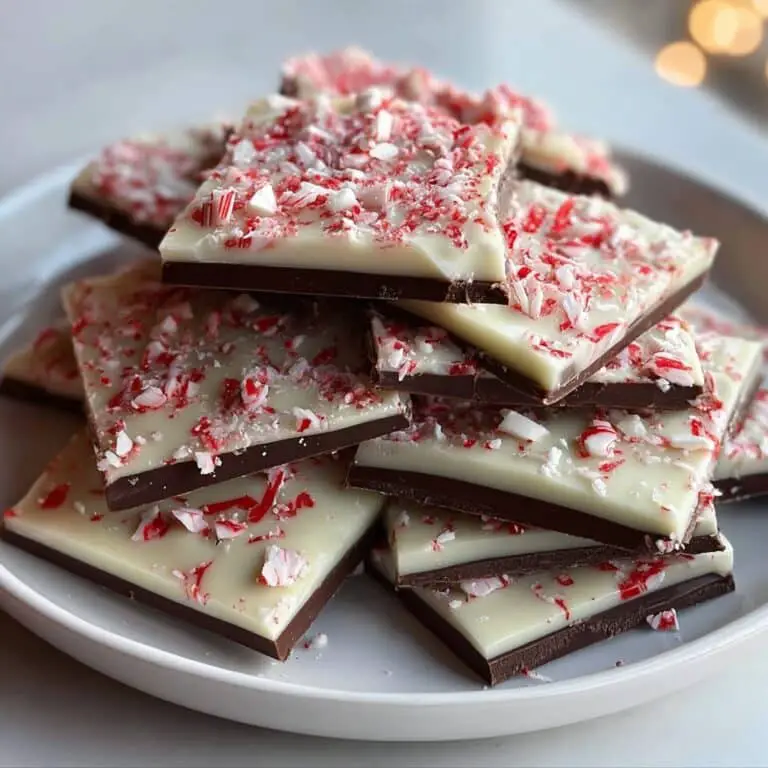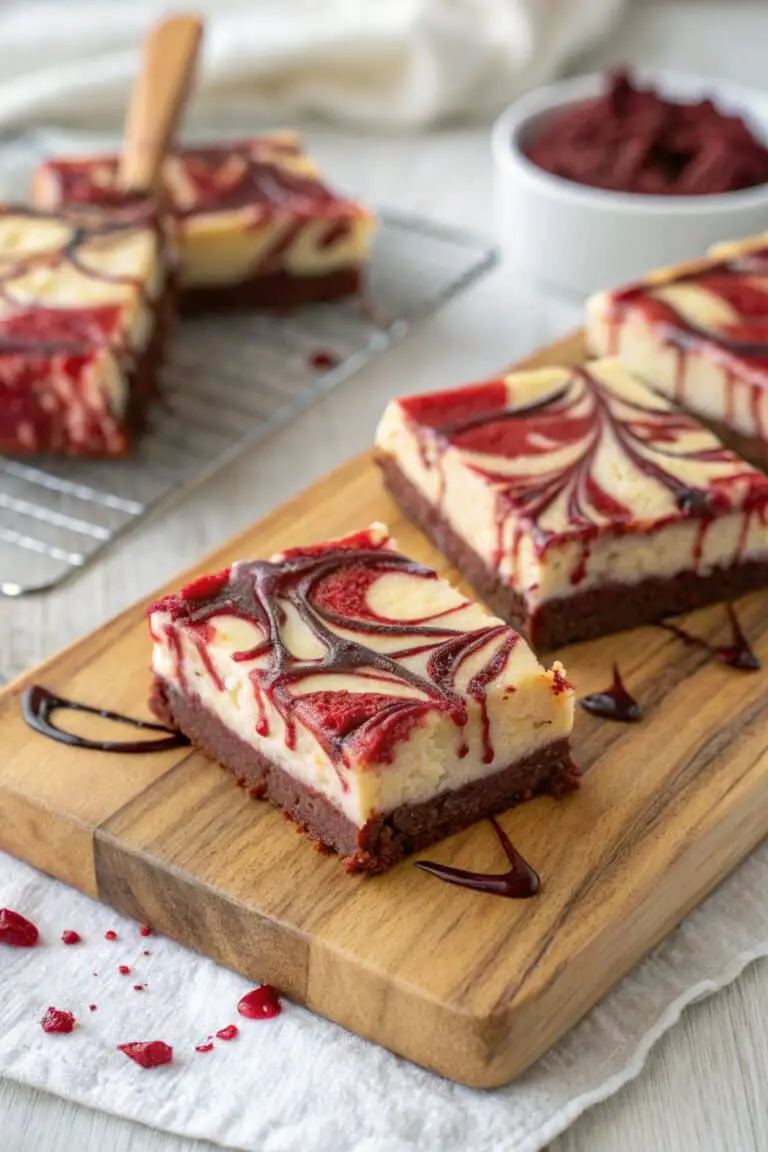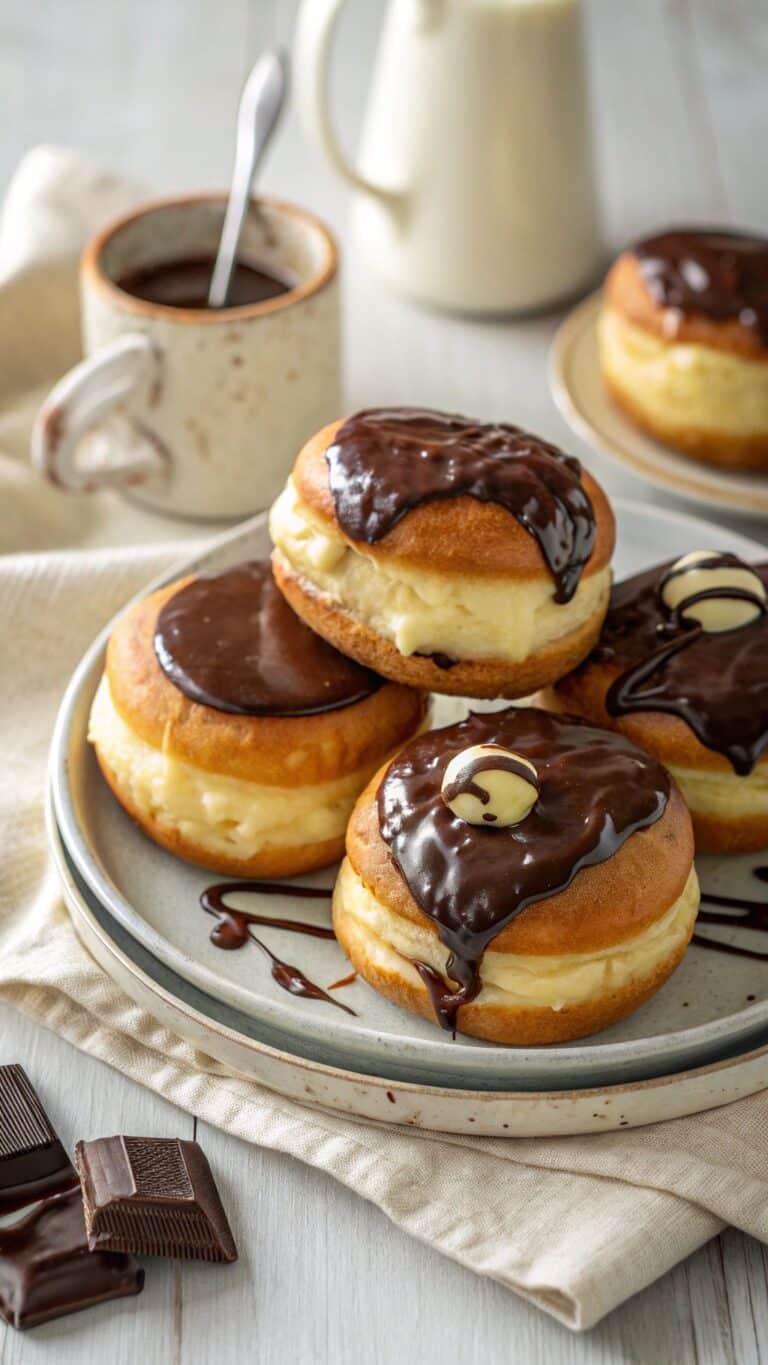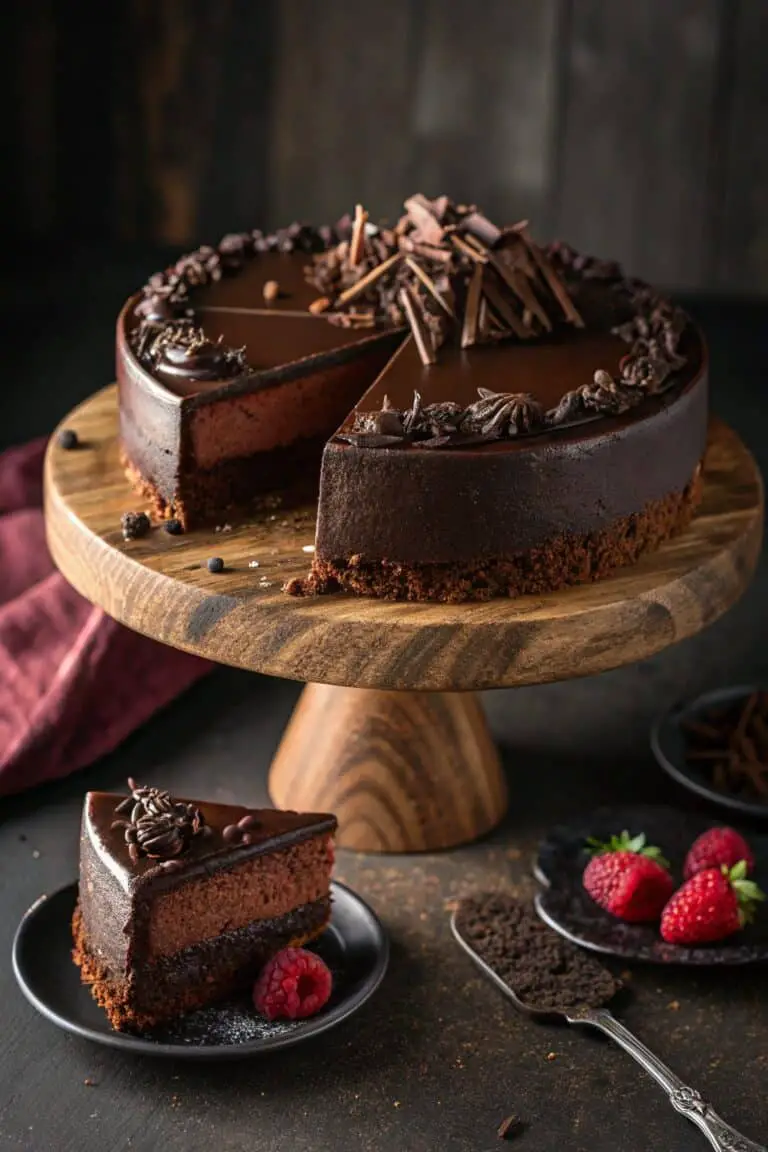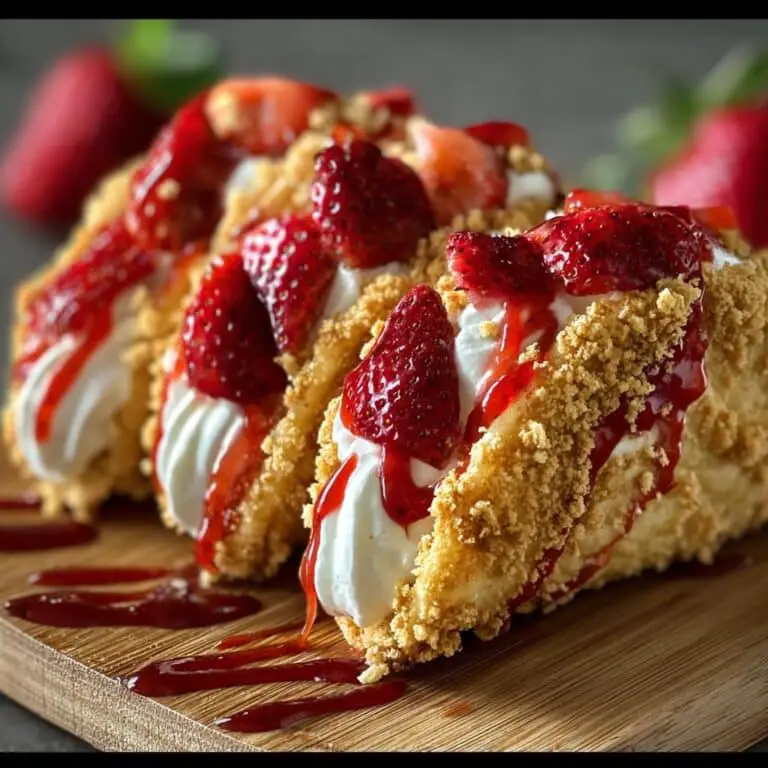Honey Baklava Cheesecake: A Sweet Fusion Delight
Honey Baklava Cheesecake is a culinary masterpiece that beautifully merges the creamy richness of cheesecake with the nutty, honey-soaked layers of traditional baklava. This dessert offers a delightful twist on classic flavors, making it a show-stopping choice for any special occasion.
The origin of baklava can be traced back to the Ottoman Empire, where it was considered a luxurious treat reserved for royalty and the elite. Over time, baklava has become a beloved dessert in many Middle Eastern and Mediterranean cultures.
Cheesecake, on the other hand, has roots that date back to ancient Greece, but it gained widespread popularity in the United States during the 20th century. By combining these two iconic desserts, the Honey Baklava Cheesecake pays homage to both culinary traditions while creating something entirely new and exciting.
For those interested in exploring the history of baklava further, you can check out this comprehensive guide on its origins and variations.
Ingredients for Honey Baklava Cheesecake
- 1 1/2 cups graham cracker crumbs
- 1/4 cup melted butter
- 2 tablespoons honey
- 1 1/2 cups finely chopped walnuts
- 1 teaspoon ground cinnamon
- 3 tablespoons sugar
- 4 packages (8 ounces each) cream cheese, softened
- 1 cup sugar
- 1/2 cup honey
- 4 large eggs
- 2 teaspoons vanilla extract
- 1/2 cup heavy cream
- 8 sheets phyllo dough
- 1/4 cup melted butter (for phyllo)
- 1/2 cup chopped pistachios
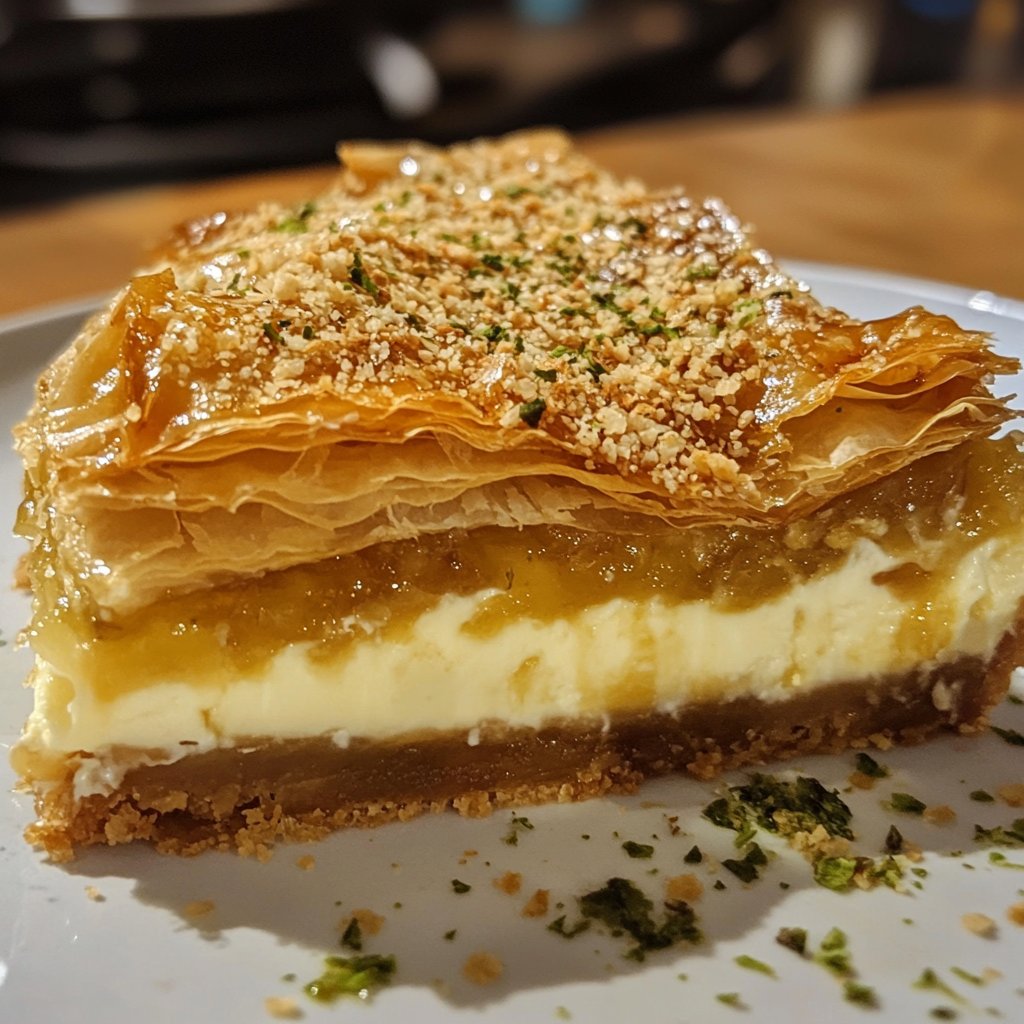
Instructions for Making Honey Baklava Cheesecake
- Preheat your oven to 325°F (160°C) and grease a 9-inch springform pan.
- In a bowl, mix graham cracker crumbs, 1/4 cup melted butter, and 2 tablespoons honey until combined. Press the mixture into the bottom of the prepared pan.
- In a separate bowl, combine walnuts, cinnamon, and 3 tablespoons sugar. Set aside.
- In a large mixing bowl, beat the cream cheese until smooth. Add 1 cup sugar and 1/2 cup honey, mixing until combined.
- Beat in the eggs one at a time, then add vanilla extract and heavy cream, mixing until smooth.
- Pour half of the cheesecake batter over the crust in the springform pan. Sprinkle half of the walnut mixture over the batter.
- Layer 4 sheets of phyllo dough on top, brushing each sheet with melted butter.
- Pour the remaining cheesecake batter over the phyllo layers, then sprinkle the remaining walnut mixture.
- Top with the remaining 4 sheets of phyllo dough, brushing each with melted butter.
- Bake for 1 hour or until the center is set. Remove from the oven and cool completely.
- Once cooled, refrigerate the cheesecake for at least 4 hours or overnight.
- Before serving, drizzle additional honey over the top and sprinkle with chopped pistachios.
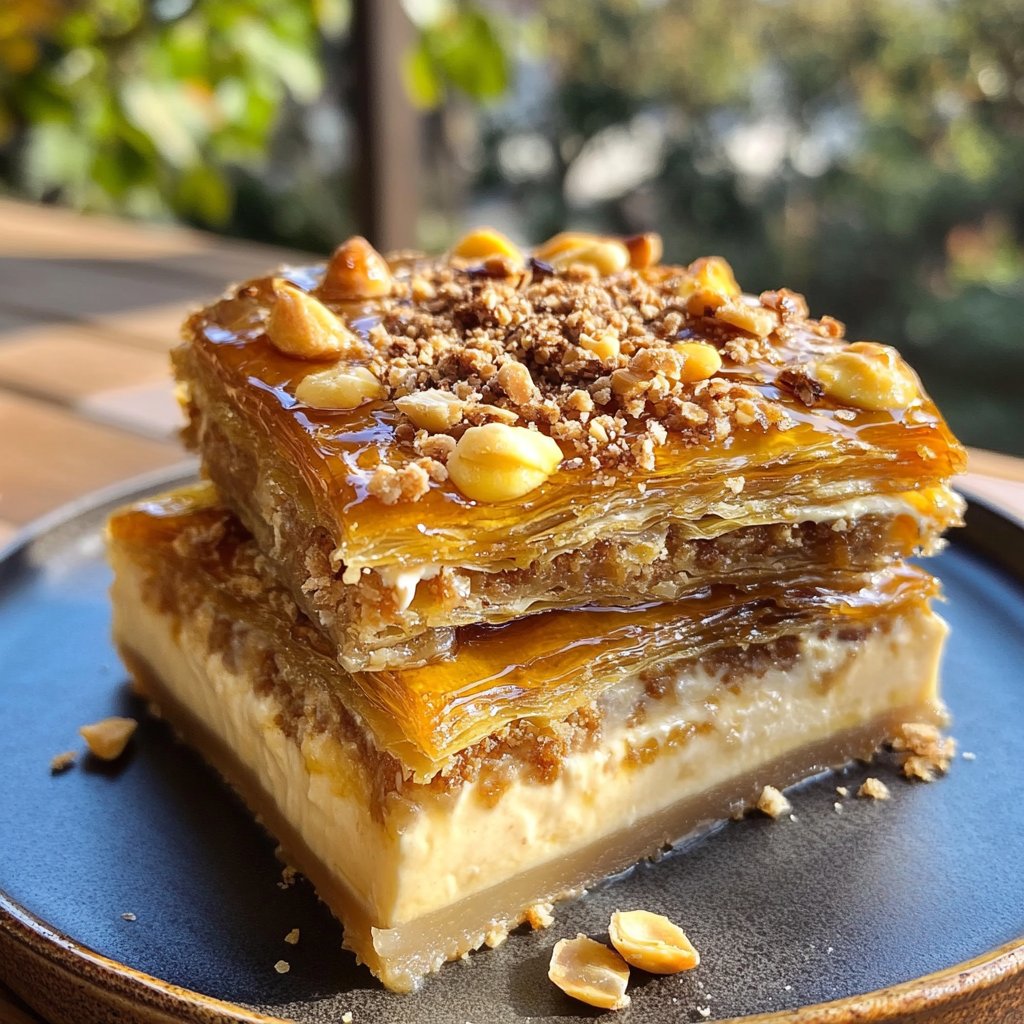
Nutritional Information
Understanding the nutritional content of Honey Baklava Cheesecake is crucial for those mindful of their dietary intake. This decadent dessert, while a treat, is rich in calories due to its creamy and nutty components. A single slice (considering a 12-slice serving from the entire cheesecake) contains approximately 450 calories.
The primary sources of calories are the cream cheese and sugar, which contribute to its deliciously rich flavor. The nuts, particularly walnuts and pistachios, add healthy fats and some protein, making them a beneficial component of the dessert.
The phyllo dough layers, brushed with butter, add a delicate crispness but also contribute to the saturated fat content. It's important to note that honey, while a natural sweetener, still adds to the carbohydrate load of the cheesecake.
For more detailed information on the nutritional breakdown of ingredients like honey and nuts, you can visit this nutrition resource for precise insights.
Wine/Beverage Pairings With Honey Baklava Cheesecake
Pairing Honey Baklava Cheesecake with the right beverage can elevate the dessert experience. A light and floral white wine such as a Riesling or a Muscat is an excellent choice, as their sweetness complements the honey and nutty flavors of the cheesecake.
If you prefer non-alcoholic options, consider serving it with a fragrant herbal tea. Chamomile or mint tea can provide a soothing counterpoint to the rich flavors of the dessert.
Alternatively, a dark roast coffee with a hint of cardamom can mirror the Middle Eastern flavors found in baklava, creating a harmonious taste experience.
Cooking Tips and Variations
Creating the perfect Honey Baklava Cheesecake involves a few key techniques to ensure the best texture and flavor. First, ensure that all your ingredients, especially the cream cheese, are at room temperature before beginning. This step is crucial as it allows for a smooth and lump-free cheesecake batter.
When it comes to the phyllo dough, handle it with care. Phyllo is delicate and tends to dry out quickly, so keep it covered with a damp towel while working. Brushing each sheet with melted butter is important for achieving the signature flaky texture.
If you prefer a less sweet version, you can reduce the amount of sugar in the cream cheese mixture slightly but keep the honey measurements for that authentic baklava taste. Experimenting with different nuts, such as almonds or pecans, can also offer a unique twist on the classic recipe.
Lastly, patience is key—the cheesecake needs ample time to set and chill, allowing the flavors to meld beautifully.
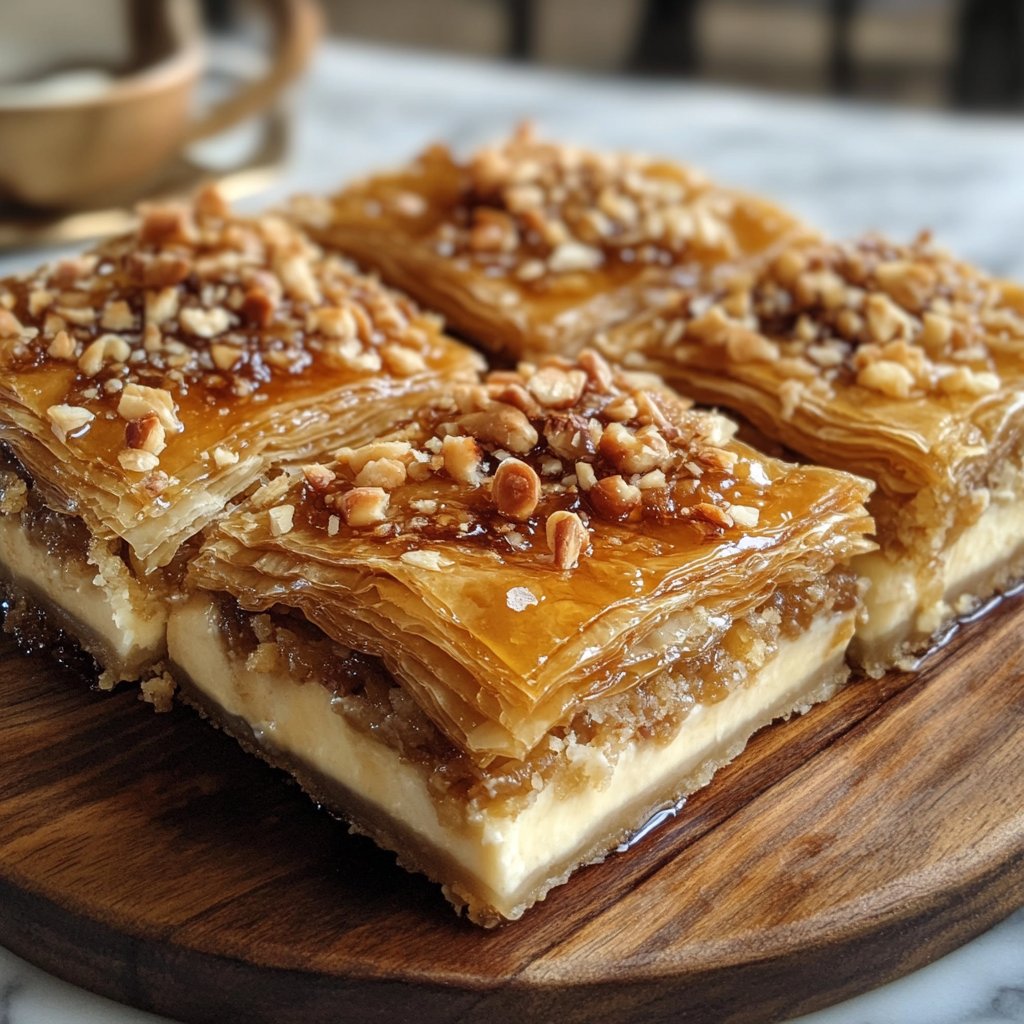
Serving Suggestions
When serving Honey Baklava Cheesecake, presentation is key to making it the centerpiece of your dessert table. Begin by allowing the cheesecake to come to room temperature slightly before slicing, as this will ensure clean cuts.
Use a sharp knife dipped in hot water and wiped dry between each slice for the best results. Due to the richness of the dessert, a small slice is often sufficient, making it perfect for sharing at gatherings.
You may wish to garnish each plate with a drizzle of honey and a sprinkle of extra chopped pistachios for added visual appeal. Serving the cheesecake on elegant dessert plates with a dollop of whipped cream can accentuate its luxurious feel.
Consider pairing the dessert with fresh fruits like berries or figs on the side; their tartness can provide a refreshing contrast to the sweetness of the cheesecake.
Honey Baklava Cheesecake Health Benefits
While Honey Baklava Cheesecake is undoubtedly a treat, it does offer some health benefits worth noting. The nuts used in the recipe, particularly walnuts and pistachios, are excellent sources of healthy fats, including omega-3 fatty acids, which are beneficial for heart health.
They also provide protein and fiber, contributing to a sense of fullness and satisfaction. Honey, a natural sweetener, contains antioxidants and has been used for its medicinal properties in various cultures. Although the dessert is high in calories, enjoying it in moderation can be part of a balanced diet.
It's important to be mindful of portion sizes, especially for those watching their sugar intake. For detailed insights into the health benefits of nuts and honey, the National Institutes of Health offers extensive research and articles.
FAQs About Honey Baklava Cheesecake
Can I make Honey Baklava Cheesecake ahead of time?
Yes, this cheesecake is perfect for making ahead of time. In fact, allowing it to chill in the refrigerator overnight enhances the flavors and makes slicing easier.
Can I freeze Honey Baklava Cheesecake?
While it's possible to freeze the cheesecake, the texture of the phyllo dough may change slightly. It's best enjoyed fresh or refrigerated for up to 3 days.
What can I use as a substitute for phyllo dough?
If phyllo dough is unavailable, you can use puff pastry as a substitute, though it will result in a different texture and flavor.
Honey Baklava Cheesecake is a delightful fusion dessert that combines the best of two beloved treats. Its luxurious texture and harmonious flavors make it an ideal choice for special occasions or when you simply want to indulge in something extraordinary. By following the tips and steps outlined, you can create a dessert that not only impresses with its taste but also with its presentation. Whether paired with a crisp glass of wine or a comforting cup of tea, this cheesecake is sure to be a hit at any gathering. Remember, enjoying it in moderation allows you to appreciate its richness while maintaining a balanced lifestyle.

